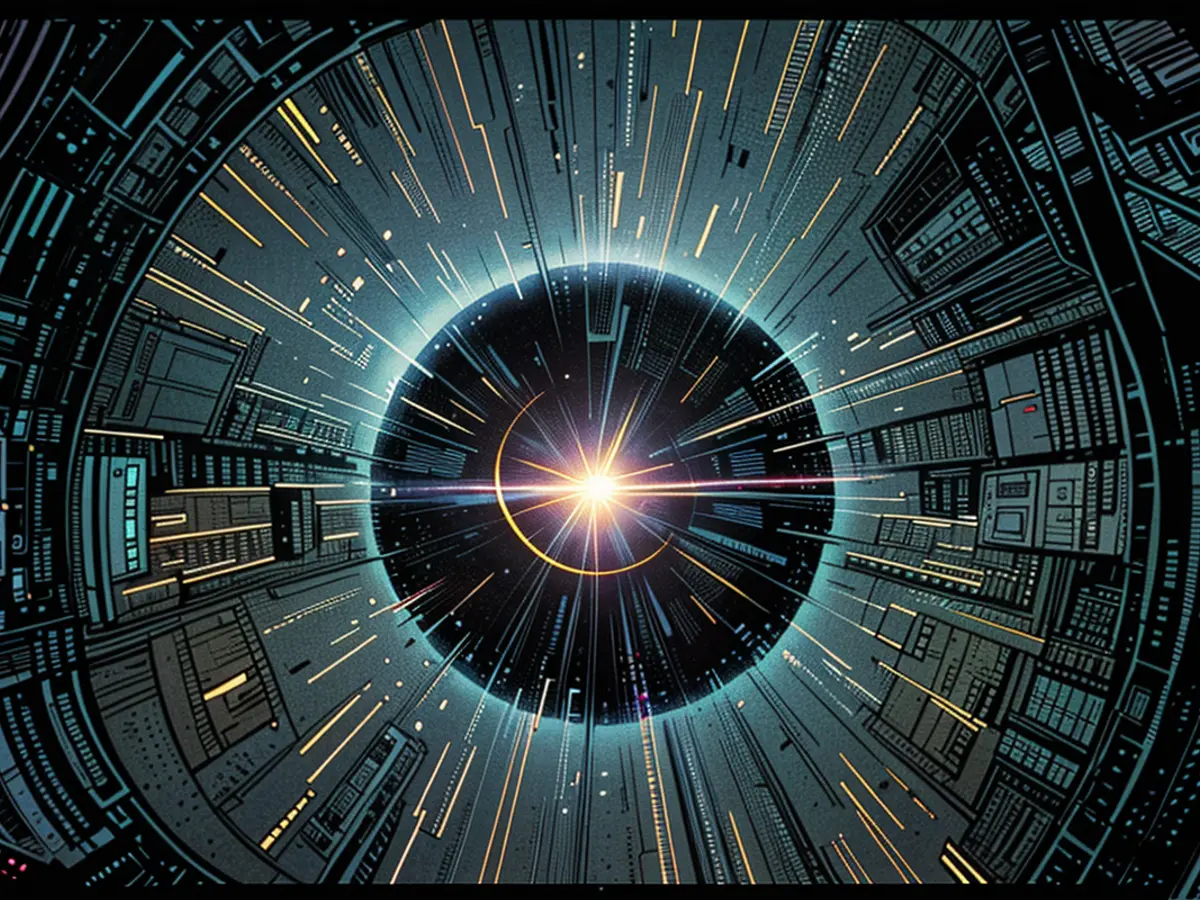Black hole probably observed for the first time when waking up
Experts believe that Black Holes are dormant. But now there are signs that one of these gravity monsters might be active. This would be the first time such activation can be observed in real-time.
A suddenly brighter distant galaxy has possibly made researchers witnesses to an active massive Black Hole. Such a change has never been observed before, the European Southern Observatory (ESO) in Garching near Munich announced.
At the end of 2019, the previously unremarkable galaxy SDSS1335+0728 became significantly brighter, it was stated. The roundabout 300 million light-years distant, in the constellation Virgo lying galaxy is currently emitting more light in the optical range, but also in the ultraviolet and infrared range. In addition, it has been sending out X-rays for some months. "This behavior is unprecedented," commented ESO astronomer Paula Sánchez Sáez.
Normally, Black Holes sleep
The research team led by Sánchez Sáez suspects that the center of the galaxy - a massive Black Hole - has become active. "If that were the case, it would be the first time we've seen the activation of a massive Black Hole in real-time," said co-author Lorena Hernández García. Normally, "Black Holes slept" and were not directly visible, added astrophysicist Claudio Ricci.
Black Holes are objects with such strong gravity that not even light can escape from them. They form when massive stars, with several times the mass of our Sun, reach the end of their existence and explode as a supernova, leaving behind the stellar remnant collapsing.
In the centers of most galaxies, massive or supermassive Black Holes are suspected. They can possess the mass of millions or billions of our Sun. The massiest in our galaxy is "Sagittarius A*" in the center of the Milky Way, which has about four million times the mass of the Sun. Ricci pointed out that this Black Hole could also become active. However, according to the ESO, the likelihood of this is unclear.
- The unusual activity observed in the galaxy SDSS1335+0728 could be indicative of a previously dormant massive Black Hole becoming active, marking the first time the activation of such a cosmic entity is being observed in real-time in the field of Astronomy.
- The educational implications of this potential discovery are significant, as it provides an opportunity for scientists to study the behavior of a massive Black Hole while active, challenges previous understanding of these cosmic objects, and could revolutionize the field of Space science.







